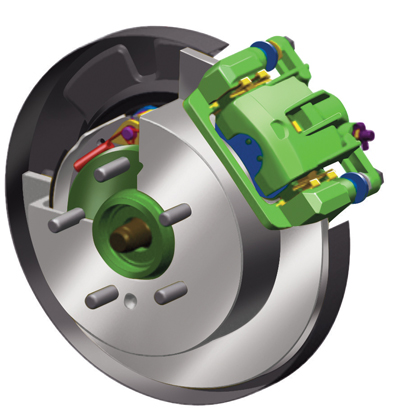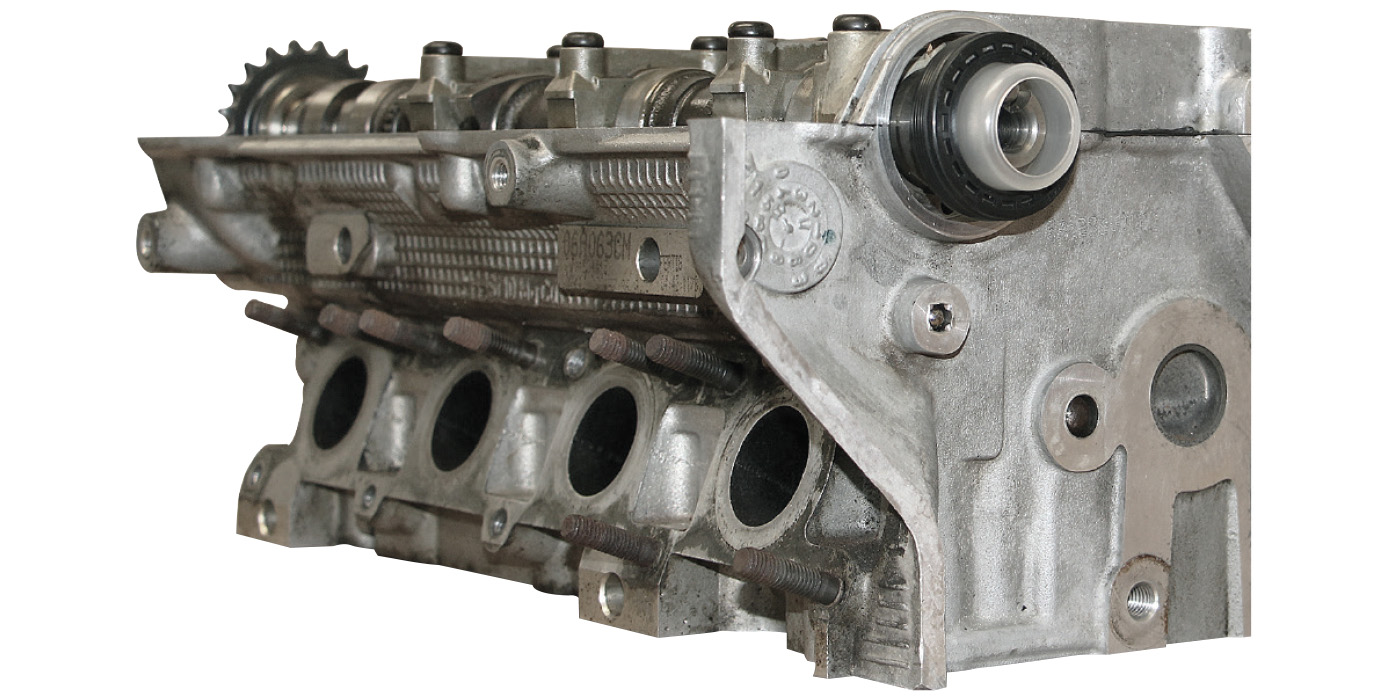 Most brake complaints will be squeak-related, with the common metal-on-metal grinding taking a close second. Both of these noises relate to the pad. The grinding noise is almost always the result of worn pads and the backing plate contacting the rotor, and we all know how to deal with that. To a lesser extent, you’ll also get some knocking complaints.
Most brake complaints will be squeak-related, with the common metal-on-metal grinding taking a close second. Both of these noises relate to the pad. The grinding noise is almost always the result of worn pads and the backing plate contacting the rotor, and we all know how to deal with that. To a lesser extent, you’ll also get some knocking complaints.
Squeaking can be the most challenging and is often evident after the brakes have been serviced. The best way to deal with brake squeal is to prevent it in the first place. While we’re all familiar with brake service, it never hurts to review good practices.
Those of us in the Northeast may see more problems that are related to the snow and salt, and the procedures used to deal with the elements, than the warm-weather guys. But no matter where you live, there’s no debating that brakes live in a hostile environment that results in rust and corrosion that have to be taken care of to ensure a quality and quiet repair.
As the pads are being removed, it’s important to look for anything that isn’t moving freely and for pads that are worn evenly. These are indicators that the workload isn’t being distributed evenly and there’s a good chance that the pads are hanging up.
As the pads are being replaced, the system inspection should continue. Open the bleeder and push back the pistons on the calipers. On the front, we use a C-clamp between the outer pad and the back of the caliper. It should take little effort to retract the piston and move the caliper away from the outer pad. If excessive effort is required, don’t force it; instead look for an indication of what’s binding and remove the caliper to further investigate. If the slides are frozen, it will be evident if the piston retracts easily with the caliper removed.
Make note if the pads are sticking in the carrier; either way, lubricate and service the sliders as well as the carrier. Be sure to remove the anti-rattle hardware in the bracket to clean the rust behind them; it’s that rust that will bind the pads, and any binding will result in noisy operation as well as poor brake performance. When installing the new pads, be sure to lubricate any area where the pad contacts the bracket, and insulate the pad backing from the piston and caliper.
Squeaks are the result of the pads vibrating against the piston and bracket when the brakes are partially applied. If possible, always reinstall the insulator shims with a little brake lube between the shim and the pad. If the shims aren’t available or aren’t reuseable, there are a couple of options. We’ve had better luck with the chemical compounds, over the universal shims that are available. Use what works best for you, but using nothing is a sure recipe for noise. We also use an aerosol product that gets applied on the new friction material and have had good success with it preventing noise-related comebacks.
You’ll also see many of these cars equipped with drum brakes in the rear that will add to the noise issues. The most common is a grinding noise caused by accumulated brake dust that’s most noticeable when the vehicle’s driven after a prolonged stop. The debris will collect at the bottom of the drum, causing a noise that will go away as the car is driven. The repair is as simple as cleaning the drums and brakes, and giving the system a good visual inspection.
Don’t overlook the hardware in that inspection; you can avoid a future noise complaint caused by broken hardware being ground up in the drum by identifying any bad hardware now. Another concern is a buildup of rust on the drum that causes interference with the backing plate. Depending on the extent of the rust, it can be cleaned off, but it’s often more cost-effective to simply replace the drums.
The last noise we’ll talk about is a knocking noise, and it’s the brake pads rattling in the brackets. Like the sway bar bushings, it takes very little movement to result in a pretty big noise. Diagnosis is straightforward and can be performed on the initial road-test.
As you’re driving over that potholed road, just apply light pressure to the brake pedal; not enough to slow the car, just enough to hold the pads tight. If the noise is gone, you can bet the pads are moving. This driving scenario will also highlight any brake squeak noises you weren’t able to duplicate. If the pads are moving, a hardware kit should provide you with all the parts needed.
I hope this look at some of the undercar noises we encounter will help you tackle these issues on Hyundais, as well some of the other cars that you find in your bay. They’re not difficult to diagnose or repair, and if you do need help, there’s no reason to be without Hyundai factory repair information. This carmaker wants us to have all the information we need to repair its vehicles. You can see for yourself; go to the Hyundai’s service information website, www.hmaservice.com, and register.
After you register, spend time looking around making of note of the resources available. There are good details on ABS, active suspension and vehicle stability systems that should reinforce the need for the good work habits that we just discussed. These computer-controlled driver’s aids are dependent on the systems they control to operate as designed. If you have any doubts, take a look at TSB 10-BR-001 on brake service best practices. It covers the same things we just talked about here. And, while you’re there, take a look at some of the other brake service bulletins and think about the time that could be saved with a quick look at the list as part of your diagnostic process.













